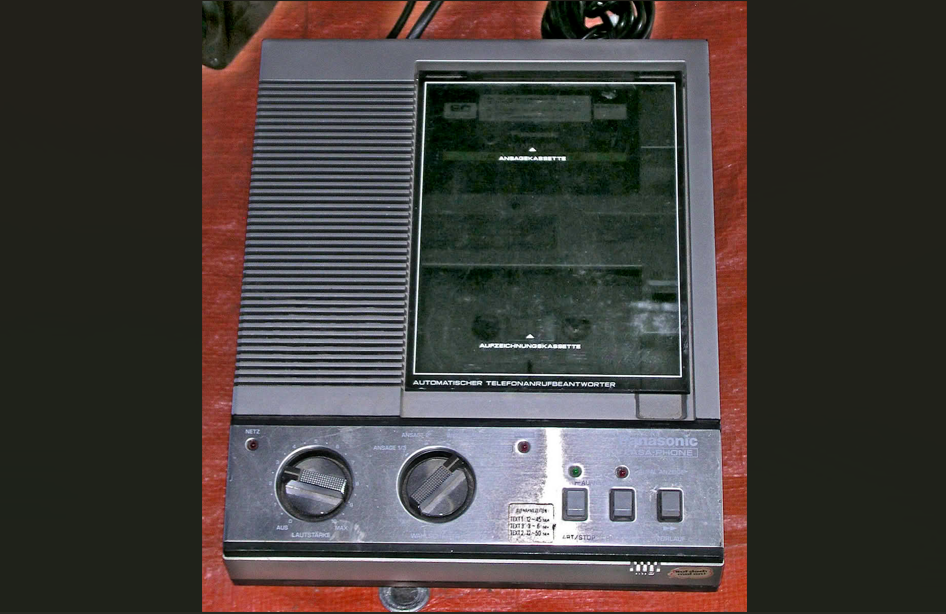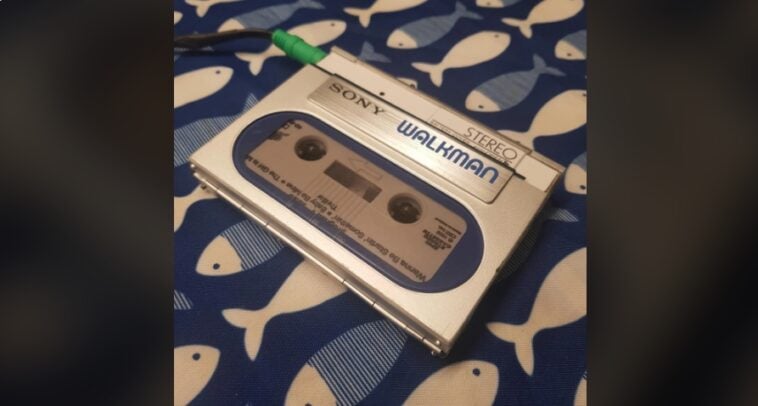Picture this: You’re trying to explain to a Gen Z kid that people once had to physically get up, walk across the room, and turn a dial just to change the TV channel. Or that “portable” music meant carrying around a device roughly the size and weight of a small brick. They’d probably stare at you like you’re describing life on Mars.
The 1980s were a magical era of technological ambition that often outpaced practicality—a time when engineers seemingly asked “Can we make this work?” instead of “Should this be the size of a toaster?” It was the decade of magnificent disasters and clunky breakthroughs, where innovation came with a side of patience, a healthy dose of physical strength, and the acceptance that sometimes your technology would randomly eat your homework (literally, if you had a floppy disk drive with an attitude).
These weren’t just gadgets; they were conversation starters, workout equipment, and sometimes elaborate pranks played by the universe. They required dedication, ritual, and often a backup plan. Yet somehow, these wonderfully imperfect machines managed to lay the groundwork for everything we take for granted today.
So buckle up for a nostalgic journey through tech history’s most endearingly awkward phase—where every device came with its own unique brand of character-building frustration, and “user-friendly” was more of an aspiration than a reality.
The Clapper

80s kids would remember those late-night TV commercials with the catchy jingle “Clap on, clap off.” As the name suggests, this sound-activated gizmo, introduced to the public in 1984, allowed you to switch your lights on and off simply by clapping your hands. These electrical switches could be plugged into any electrical outlet, with the capacity to control two devices at most.
The fact that it might accidentally trigger if you sneezed too hard or if the dog barked in the wrong key is neither here nor there because, in an era when remote controls were still novelties, The Clapper felt like living in the future.
Brick Phones

Phone calls on the go were no joke in the 80s—mainly because carrying a massive “brick” cell phone with comically long antennas was the equivalent of hauling a small toolbox around. These battery-hungry devices signaled major status points if you had the extra cash, but also led to some seriously sore arms.
First introduced in 1984 by Motorola with the DynaTAC, some of these devices weighed about 2 pounds and burned a $4,000 hole in your wallet. However, because they didn’t need to be tethered to anything, the novelty of them was enough, and then some.
VHS Tapes & VCRs

Before streaming, binge-watching meant renting chunky VHS (Video Home System) tapes (which were introduced to the American public in 1977) or recording your favorite show by setting up a fussy video cassette recorder (a.k.a. a VCR, which became available to consumers in the late 1970s).
Missed the timer? Too bad—you’re just going to have to watch reruns! If you wanted to rewatch a scene, you had to sit through the whirring rewind or risk being penalized by the video store for not returning tapes properly rewound.
Cassette Tapes

These handy rectangular tapes, first made commercially available in 1965, powered everything from boomboxes to car stereos. They were the foundation of DIY mixtapes and heartfelt gifts for your crush. Cassette Tapes often got snarled, forcing you to rescue the magnetic ribbon with a trusty pencil. And let’s not forget the radio-recording drama of catching your favorite song at just the right moment—DJ chatter and all.
Walkman

The Sony Walkman (introduced in 1979) was your personal soundtrack on the go in the 80s. Pop in a cassette, slip on the foam headphones, and you are transported into your own music bubble. Flipping the tape became a zen-like ritual, and managing battery life—often with spare AA batteries in your backpack—was part of the experience.
Boombox

Equal parts status symbol and traveling sound system, the boombox, which first gained popularity in the U.S. in the 1970s, was the original portable party machine. You’d spot these larger-than-life battery-operated stereos perched on your shoulders, blasting the latest hits and announcing your musical tastes to everyone within a three-block radius. If you really wanted to impress, you got a model with dual cassette decks and extra bass.
Overhead Projectors

Teachers everywhere relied on overhead projectors (a.k.a. OHPs) to display notes on transparent sheets. The device gained widespread use in schools in the U.S. in the late 1950s and early 1960s.
Squeaking markers, smudgy writings, and the smell of cleaning solution were all part of the classroom vibe. Yes, “cutting-edge” educational tech made you feel important if you got to switch out the sheets for the teacher.
Commodore 64

Touted as one of the best-selling home computers of all time, the Commodore 64 introduced many families to computing in the early 80s. Its 8-bit graphics and chiptune music were mind-blowing back then, igniting a generation’s passion for coding, gaming, and discovering the wonders of BASIC. It was more than a keyboard—it was your digital playground.
Atari 2600

Gaming in the 80s wouldn’t be the same without the Atari 2600 (first released in 1977). Armed with a single-button joystick, you’d guide your pixelated avatar through games like *Space Invaders* or *Pitfall!*. The graphics were boxy, the sound effects were primitive, and yet millions of kids were happily tethered to their TV sets for hours of arcade-style delight.
Rotary Phones

Before smartphones became an essential part of everyone’s pocket, there were rotary phones with spinning dials that demanded patience. Wrong number? Start all over again. Chatting on a rotary phone also meant staying tethered to the wall by a curly cord that was forever twisted and tangled. Let’s see your texting speed, best that.
Fax Machines

Sending an email attachment might be routine today, but in the 80s, the fax machine was a must-have office hero. It scanned documents and sent them over telephone lines—slowly and with plenty of beeping, whirring drama. A paper jam could ruin your entire day, and the thermal paper would fade over time, adding extra suspense to your file cabinets.
The Pager

Pagers, also known as beepers, made a shrill alert sound that signaled someone was trying to reach you, and were the wireless communication devices that kids who grew up in the 80s knew of. Although pagers were invented as far back as 1949, the tone and voice radio versions began to be widely used only in the 1980s.
Beepers only displayed phone numbers (and possibly the occasional coded message), so you had to run to the nearest pay phone to make a call back. It was a lifesaver for doctors and business types, but definitely not for long-winded chatters.
Dot Matrix Printers

Before laser jets and inkjets made printing a silent, speedy affair, there was the dot matrix printer: a mechanical beast that announced every single document with a screeching, grinding, high-pitched symphony. Printing a one-page book report was an event that could be heard throughout the house.
Introduced commercially sometime in the late 60s, these printers became widely used in the 70s and 80s for their cost and versatility. They worked by hammering pins against an ink-soaked ribbon, creating letters out of tiny dots. The real ceremony was tearing off the perforated, hole-punched edges of the continuous-feed paper, a ritual that required a surgeon’s steady hand to avoid ripping your homework in half.
Electronic Typewriters

The bridge between manual typewriters and personal computers, electronic typewriters brought digital magic to the familiar click-clack experience. These upgraded writing machines, which became popular throughout the 80s, featured correction ribbons and memory functions, with some high-end models having single-line LCD displays that could show you a whole sentence before committing it to paper.
While the familiar end-of-line warning evolved from a mechanical ding into an electronic beep, the true game-changer was the ability to delete mistakes without reaching for correction fluid. For students and office workers, these machines represented the cutting edge of document creation—until computers made them look as outdated as their manual ancestors practically overnight.
The Answering Machine

Before voicemail was a feature on your phone, the answering machine was the electronic gatekeeper of your landline. This standalone box, complete with a tiny cassette tape, would faithfully record messages while you were out. The suspense of coming home to that blinking red light was real. You’d hit play and hear the awkward silence before the beep, followed by your friend’s message—or you could screen your calls, listening in real-time and deciding if you really wanted to pick up for your aunt. Just hope the tape didn’t get chewed up mid-message.
Although first introduced commercially in 1949, its popularity surged in the 1980s, spurred on by the breakup of the AT&T phone monopoly. That historic shift opened the floodgates for competing manufacturers, making these gadgets affordable enough for the average home.
5.25-inch Floppy Disks

Forget the cloud—in the 80s, your digital life existed on a flimsy, truly floppy square of plastic. The 5.25-inch floppy disk, first introduced in 1976, was how you saved everything from your book report to your favorite computer game. Inserting one into a disk drive and closing the latch with a satisfying ker-chunk was part of the ritual.
With a whopping capacity that held less data than a single high-res photo today, these disks were notoriously fragile. A rogue magnet, a bit of dust, or just bending it the wrong way meant your entire project was toast.

